If you imagine biologists radio-tracking wildlife, the first image is probably something big: Grizzlies. Elk. Perhaps even birds.
On remote West Virginia streams, though, biologists track crayfish. That’s right: several crayfish are fitted with teeny-tiny radio transmitters as they scuttle about their business.
Nicole Sadecky, the biologist tracking them, uses the radios to learn more about the endangered Guyandotte crayfish.
“In June 2017 we started a life-history study that’s been ongoing since then,” says Sadecky, a graduate student at West Liberty University. “So far, we have more than two years’ worth of life-history information. We’ve kind of learned when the species’ reproduction period is likely happening, when the females are laying their eggs, and we roughly know how large these individuals are growing and how quickly they’re growing.”
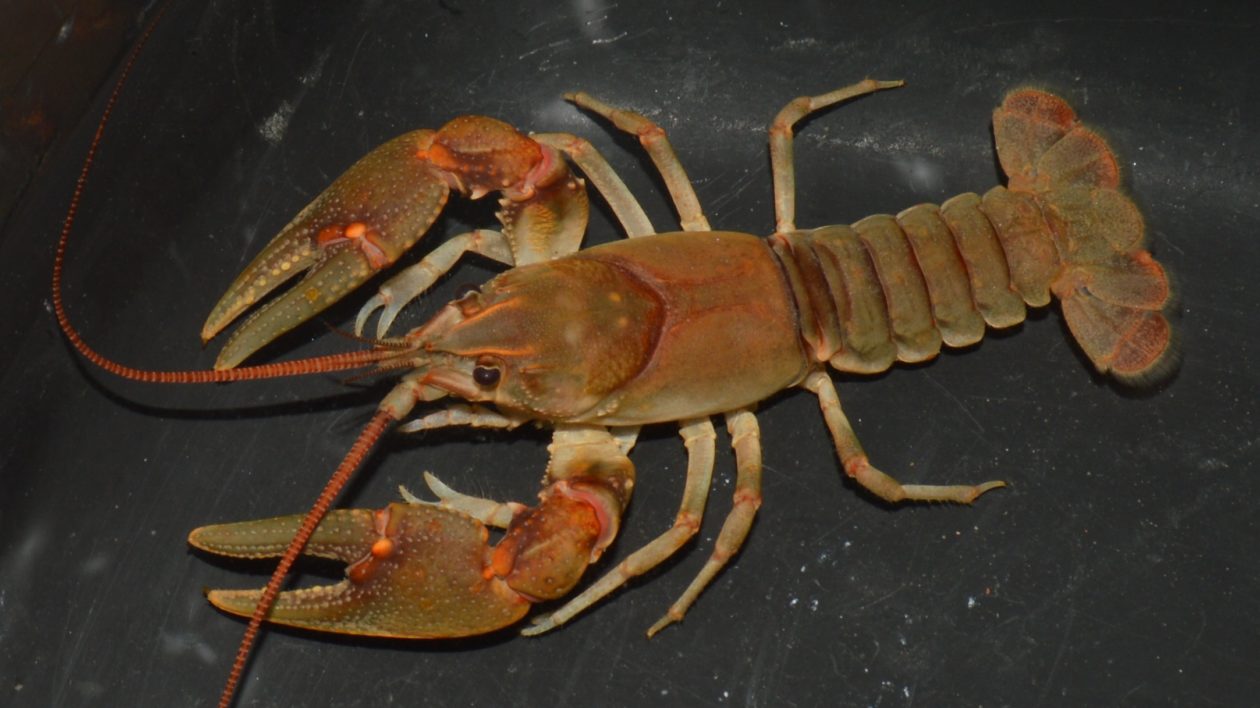
That doesn’t sound like much, but it’s a lot more than scientists knew about the species in 2009. Back then, the Guyandotte crayfish (Cambarus veteranus) was thought to be extinct, wiped out by coal-mine drainage, siltation and other environmental disturbances.
That changed when Dr. Zac Loughman, a professor at West Liberty, discovered a relict population of veteranus at a single location in Pinnacle Creek, a tributary of the Guyandotte River in southern West Virginia.
Historically, the species had been found in eight streams, all tributaries of the upper Guyandotte. Loughman and his students later discovered a second population in Clear Fork, a nearby Guyandotte tributary, but an exhaustive search turned up no others. In 2016, the U.S. Fish and Wildlife Service listed C. veteranus as endangered.
“Following that, we really needed to learn more about what sort of habitat the species was using, as well as a little bit about its life history,” Sadecky says.
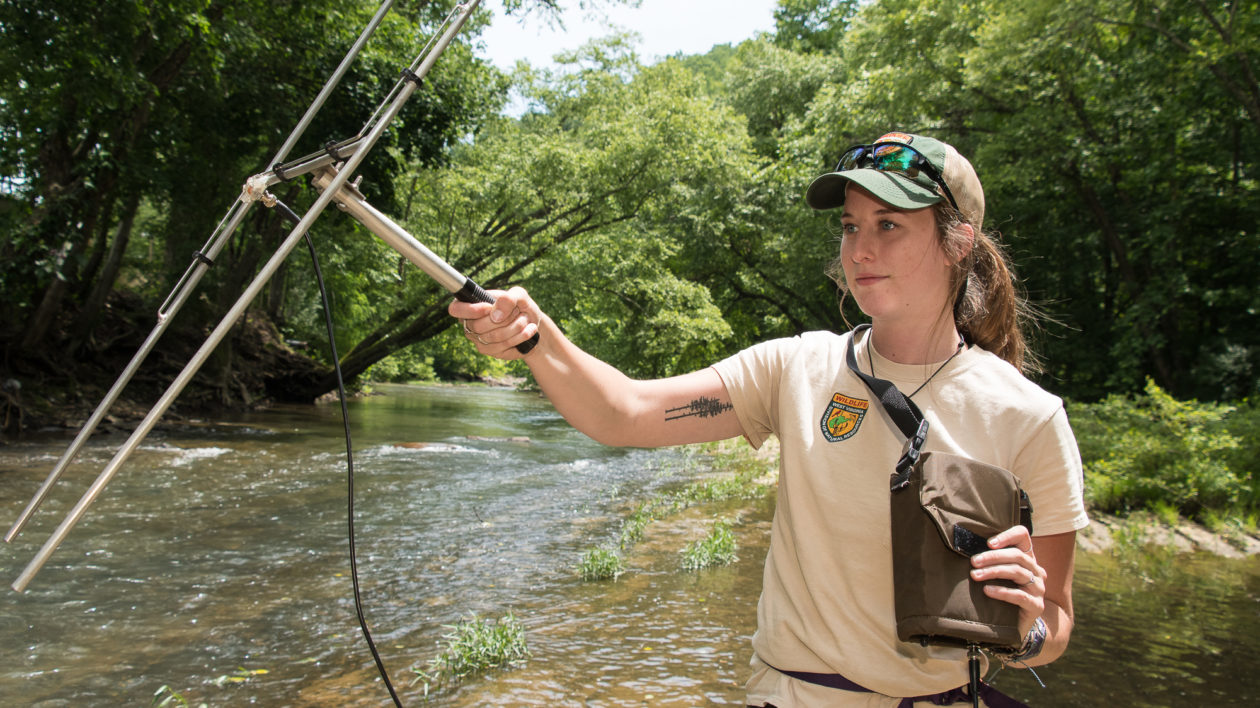
Having worked alongside Loughman for years as an undergraduate and as a grad student, Sadecky already had a wealth of experience with that particular crayfish. The Ravenswood, West Virginia, native also had done field work on the species for the West Virginia Division of Natural Resources. Not surprisingly, she chose to expand her work into a master’s thesis project.
In the summer of 2018, Sadecky began studying the species’ movements within their environment. To accomplish that, she netted specimens attached tiny radio transmitters to their claws.
The pea-sized transmitters, which weigh just 1.5 grams, don’t appear to impede the crayfish’s movements. Sadecky says the radios had previously proven effective for tracking the non-endangered New River crayfish, which is similarly sized and uses similar habitat.
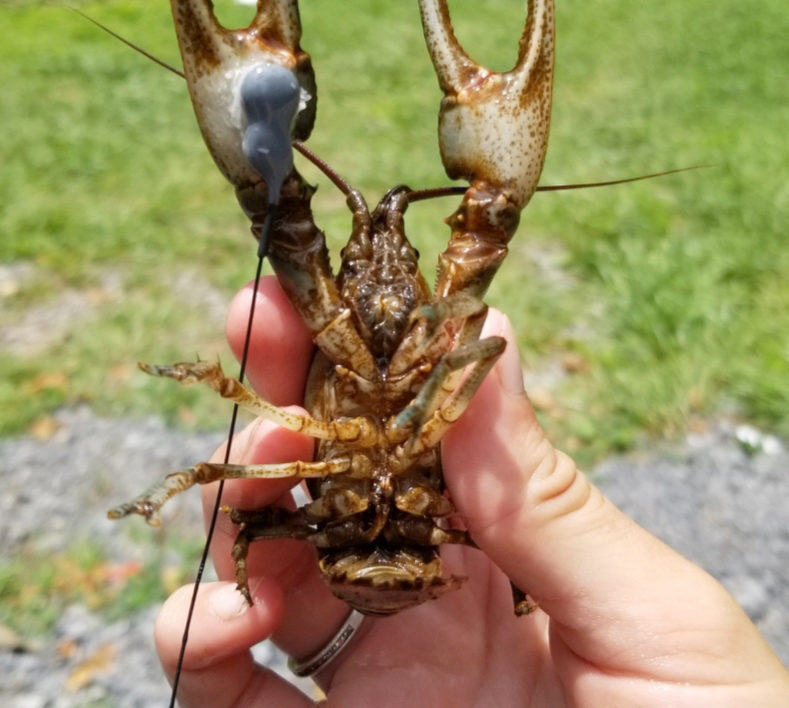
“We put transmitters on five [Guyandotte] crayfish just to see if it was possible,” she says. “It worked, and we were able to recover almost all the crayfish we tracked. This year, we’re dialing in and finding out how much they are moving and how far they move in a day.”
She tracks four times a day — at 6 a.m., noon, at dusk and at midnight. The data she gathers should tell her how much of the stream’s habitat the radio-equipped crayfish are using, and whether they’re moving actively or sitting still.
“So far, we’ve seen more movement out of the males, which makes sense,” she says. “[Late spring] is the time of year we think they’re reproducing, so the males are moving to try to find females.”
Sadecky’s habitat work has revealed that the species prefers to live in the spaces under slab-like boulders where the water flows just swiftly enough to keep sediment from clogging spaces between stones. She says identifying C. veteranus’ preferred habitat might eventually aid efforts to reintroduce it to streams from which it was extirpated.
“If we figure out what they need, maybe we can recreate those conditions and move some veteranus there sometime in the future,” she says.
If and when that happens, the Guyandotte crayfish might recover enough to be removed from the federal Endangered Species List. That would delight Loughman, a widely recognized authority on Appalachian crayfish. He says the region’s geology and topography have given rise to a remarkable number of species.
“Crayfish show an ungodly amount of endemicity,” he says. “They have a tendency to get stuck in a watershed and get isolated. When that happens, you end up with critters that are endemic only to specific streams.”
Loughman says North America is home to roughly 400 crayfish species. The world as a whole has about 700.
“The U.S. is the center of diversity, globally, for crayfish,” Loughman adds. “They’re divided into three separate faunas: the Coastal Plain Fauna, which is the source of the crayfish we eat; the Ozarkian Fauna and the Appalachian Fauna.”
West Virginia falls within the Appalachian Fauna. The state, though small in size, has given rise to 28 known crayfish species, with 19 in genus Cambarus alone. “A lot of people would be surprised to know that,” Loughman says. “Most folks think crayfish are all the same — ‘a crawdad is a crawdad is a crawdad.’”
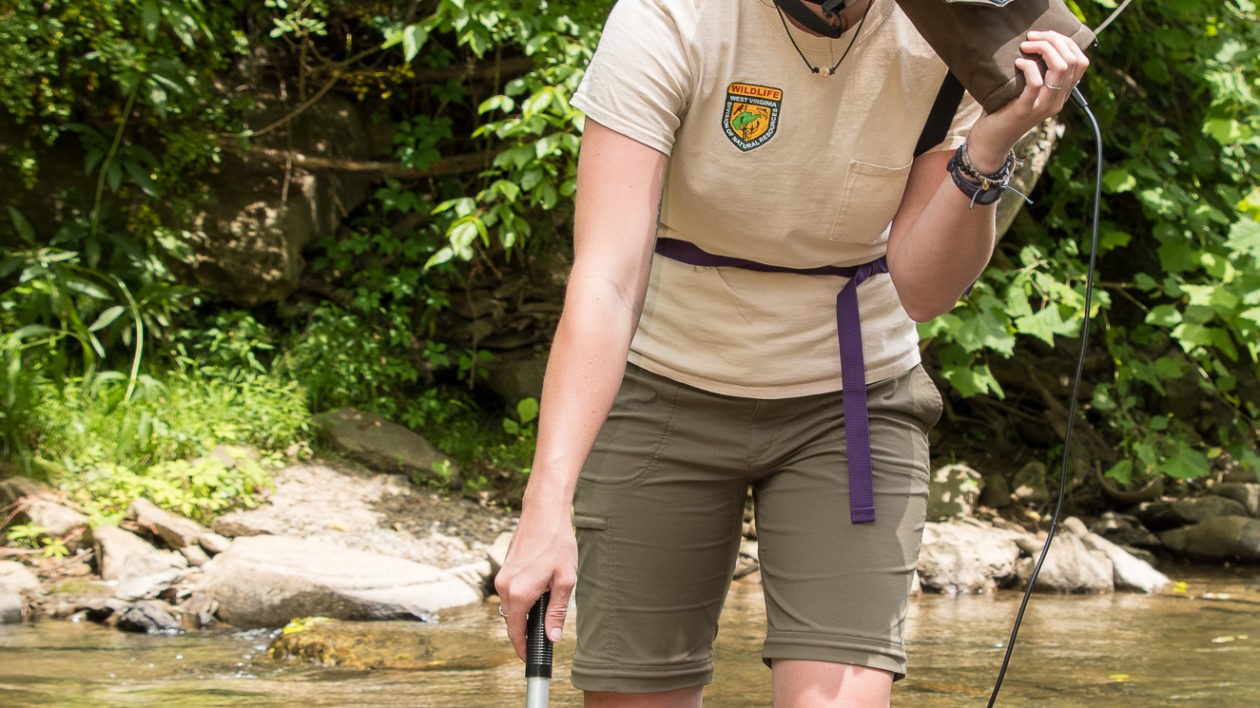
They’d probably also be surprised to learn how important crayfish are within their environment.
“Crayfish are ecosystem engineers,” Loughman says. “They dig up the substrate and move rocks around, and that creates habitat for other species such as stoneflies, darters, and even baby catfish. By performing this function, they help to make their ecosystems more diverse. Nothing in Appalachian streams performs that function to the degree crayfish do. When you lose crayfish, you cause other species to decline.”
In addition, crayfish serve as important food sources for raccoons, opossums, hellbenders and any number of fish species.
“Crayfish help energy move up the food chain,” Loughman says. “They eat dead leaves, dead fish and other live and dead organisms. The energy from the critters crayfish eat ends up in the critters that eat the crayfish.”
Not surprisingly, Loughman and Sadecky yearn to see the Guyandotte crayfish regain its role as an important player in the Appalachian ecosystem. Sadecky, who expects to complete her thesis early in 2020, wants to continue to work with the species until it’s no longer endangered.
“I’d like to be involved in restoration and management efforts,” she says. “It was cool to be part of the baseline-data study and part of the [endangered species] listing process, and learning what veteranus is doing in these streams. But I really hope to see it through and be with it at the end as well.”
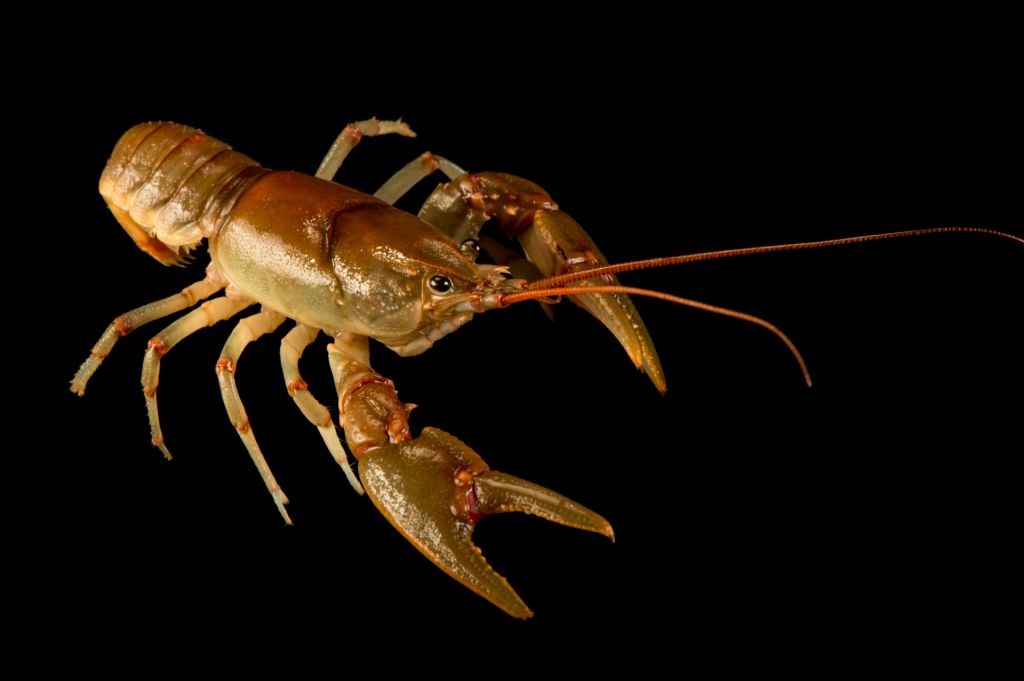



Dr. Loughman and his students have also completed some great inventory work under the Thicket of Diversity Project in the Big Thicket of southeast Texas. The Nature Conservancy has actively played a role in supporting this project with the Big Thicket National Preserve and partners.